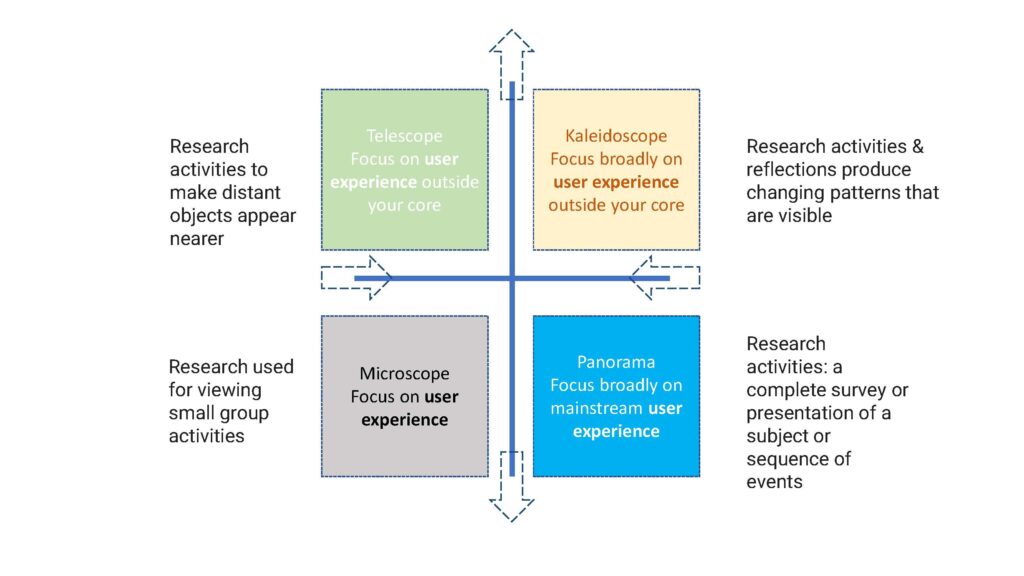To challenge your current perspective, you can view the library as an educational community center. You can look for commonalities that point to unmet needs. You can program the library service to support distance learning and you can configure circulation services to support pick up services. Our planning team helps learning communities uncover opportunities to thrive and grow. We call it the kaleidoscopic discovery method (see graphic below).
Our library programs make it possible to quickly sift through space planning data and surveys. Our project data supports the basic requirements for library service and offers a wider perspective. During our community engagement workshops, we learn about the community and we look for commonalities that point to unmet needs.
A PLACE FOR CULTURE
On a grand scale the library is a symbol of our culture. It effects the local educational and cultural fabric of the community. This means that we need to recognize the value of library planning. We need more places that function like grandmas house – friendly but not intimate. We need to understand that the public’s third place is a library. How do you manage collections, technology, infrastructure and the cloud?
There are no easy answers, and the library solution to a problem may not work for another library. There are no cookie cutter approaches. But consider the possibilities that your historic library can be renewed through a process of discovery. We’ve seen many library initiatives succeed. That’s because libraries grow much bigger over time.
CBS Program On 21st Century Libraries
As Erika Connelly showed us in “Welcome to the library of the 21st century” / via @cbssunday – the library of today requires innovation.
Librarians are primed to focus on how to meet the unmet user. They need support to go deeper and explore what is possible. After all, what happens when something not done?

